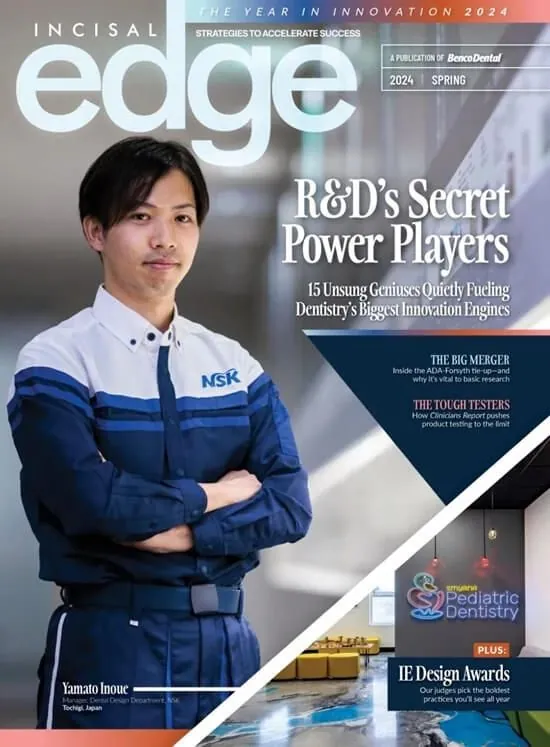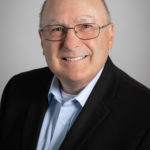HOWARD STRASSLER, DMD
Notes on the astonishing advances witnessed during a career blessed by innovation, invention and vastly improved patient care.
AS EVERYONE ON this year’s Incisal Edge 40 Under 40 could tell you, four decades is a long time. (They’ll all get there someday.) I’m passing a similar milestone myself in 2017, as it happens: 40 years in dental academia — as a teacher, researcher, industry adviser and consultant, presenting education programs and writing articles on the latest materials, techniques, ideas and innovations. How has dentistry changed since 1977? Let us count the ways.
For me, it all starts with adhesion, the bonding of restorations to the tooth structure. The first scholarship on this phenomenon was published in 1955, but ’77 was when dentists could finally match bonding to enamel with light-cured super composite resins, thanks to blue-wavelength lights.
In effect, 1977 marked the birth of esthetic dentistry, and the ensuing decades have seen remarkable advances: the introduction of veneering, for example, to alter the color, shape, size and alignment of teeth. (Ditto minimally invasive techniques such as tray bleaching and WhiteStrips.)
Tooth veneers have endured a bumpy ride, as typically happens with any new material or technique. I was fortunate, while at the University of Texas Health Science Center at Houston in 1977, to be introduced to Mastique, the earliest veneering product. Dr. Frank Faunce, a pediatric dentist at the time, had seen how fluorosis and tetracycline staining had deleterious effects on the self-esteem of children and adolescents. His innovation — later adopted by Dentsply Caulk — was to develop a thin, prefabricated tooth-colored plastic veneer that bonded to enamel.
In 1982, Drs. John Calamia and Richard Simonsen of New York University introduced minimally invasive porcelain veneers. Talk about an advance: I have patients I treated in 1984 who still speak of how well the veneers I placed have lasted.
You can’t discuss recent improvements without mentioning digital den- tistry. Many focus strictly on dental CAD/ CAM, which was introduced in the mid1980s. The earliest versions were considered novelties — a dental hobby of sorts. When I lectured on CAD/CAM at the American Dental Association in the early ’90s, dentists were hesitant to change — an innate skepticism that is, I freely admit, entirely appropriate.
Think of digital radiography, too, both 2D and 3D. Three-dimensional cone-beam images are enabling clinicians to incorporate restorative dentistry with implant treatment planning and placement on an integrated digital platform. Other advances: live video, clinical documentation with photographs and even something as seemingly simple as taking paper records and practice management digital.
The estimable year 1977 also saw the introduction of self-adhesive bioactive materials with fluoride-release glass-ionomer cements that chemically bonded to the calcium in dentin and enamel. Like all new materials, the earliest iterations blended great promise with mixed results — compromises on color and shade matching, plus surface degradation during setting and finishing. Forty years on, however, we have a new generation of bioactive materials as restoratives, better resin-modified glass ionomers and plenty more.
Here’s a biggie: endosseous dental implants. They emerged in the 1950s, but the last four decades in particular have brought forth major strides in metals, ceramics and surface treatments. The success of these implants caused a paradigm shift in prosthodontics — not only for implant-supported dentures but also in the significant decrease it augured in treatment planning of fixed partial dentures.
In 1982, Drs. John Calamia and Richard Simonsen of New York University introduced minimally invasive porcelain veneers. Talk about an advance: I have patients I treated in 1984 who still speak of how well the veneers I placed have lasted.
Think of endodontics. Hand instrumentation has been replaced by rotary, for more effective treatment of infected root canals. Endodontic sealers have also improved. Likewise magnification: Begin- ning in the early ’80s, dentists got much-improved visualization from diopter magnifiers, visor loupes and binocular loupes. These days, such loupes are lightweight, battery-powered LED headlamps that offer stunning clarity.
Technology of all sorts now enhances patient treatment, including diagnostic devices to screen for cancer, caries and periodontal disease. Lasers have gone mainstream. Someday soon, stem cells might become an integral part of routine dental care. All this has spurred renewed emphasis on whole-body wellness. Periodontal disease has been linked to heart health through the notion that chronic infections are associated with cardiovascular disease. In expecting mothers, perio disease is a possible cause of low-birth-weight babies. Oral disease likely affects other systemic ailments as well.
Forty years! It’s been quite a ride. Dental care has changed almost beyond description. To the young doctors like those we celebrate in this issue, I say: Embrace the future, but with commensurate hesitancy. Ask for evidence. Exercise your well-founded skepticism. If you do, dentistry’s next four decades are sure to be as astonishing as the last four:
Incisal Edge’s HOWARD STRASSLER, DMD is a pro fessor as well as the director of operative dentistry at the University of Maryland School of Dentistry. He practices in Pikesville, Maryland.




